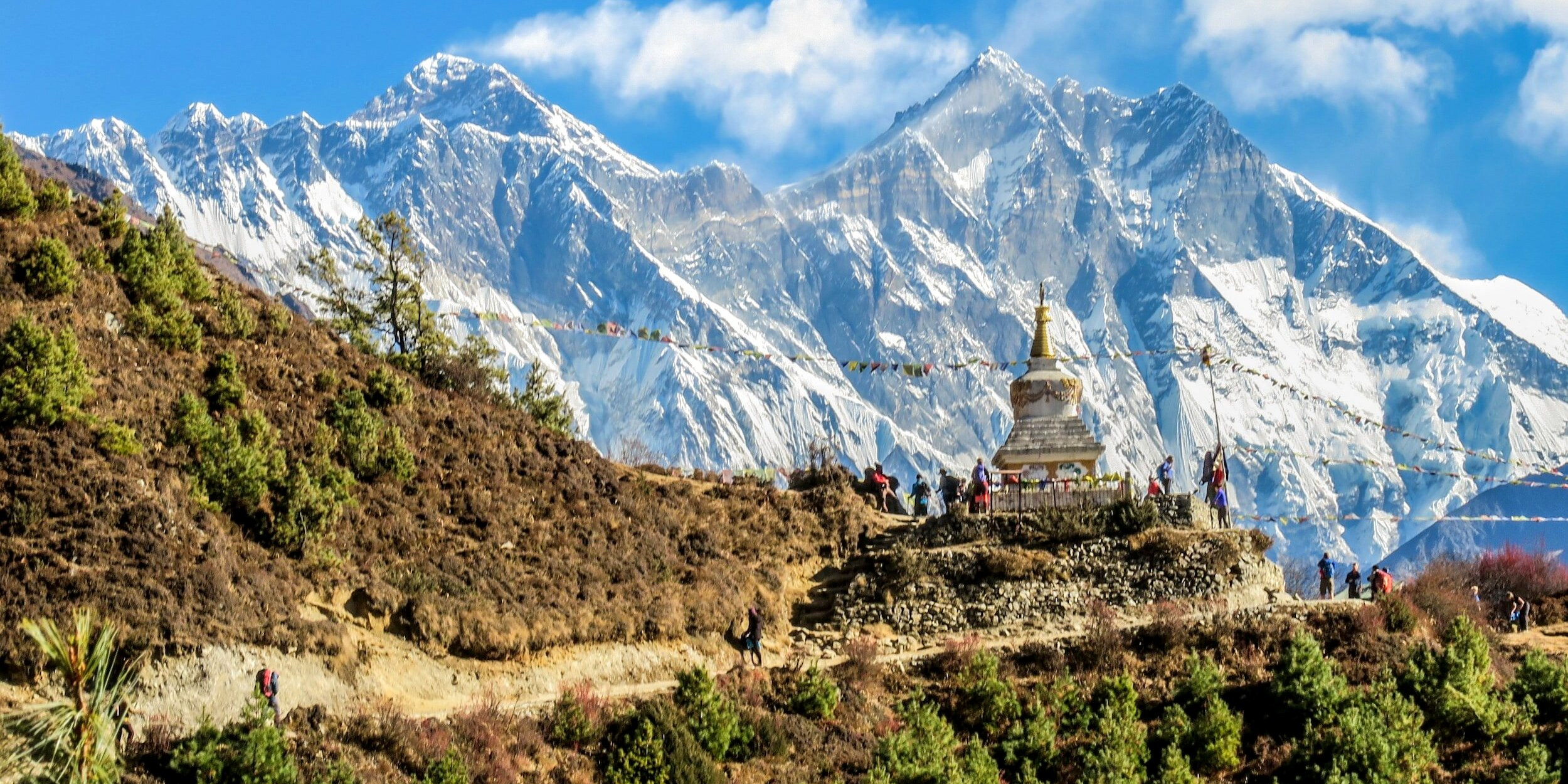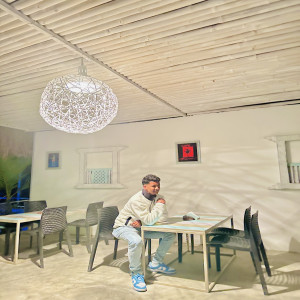Everest Base Camp Trek
The Everest Base Camp Trek is one of the most iconic and exhilarating treks in the world, offering adventurers the chance to come face-to-face with the highest peak on the planet, Mount Everest (Sagarmatha). This trek is not just about reaching a physical location but about embarking on a journey of a lifetime, filled with breathtaking scenery, challenging trails, and unique cultural experiences. Here’s a detailed look at what this trek involves:
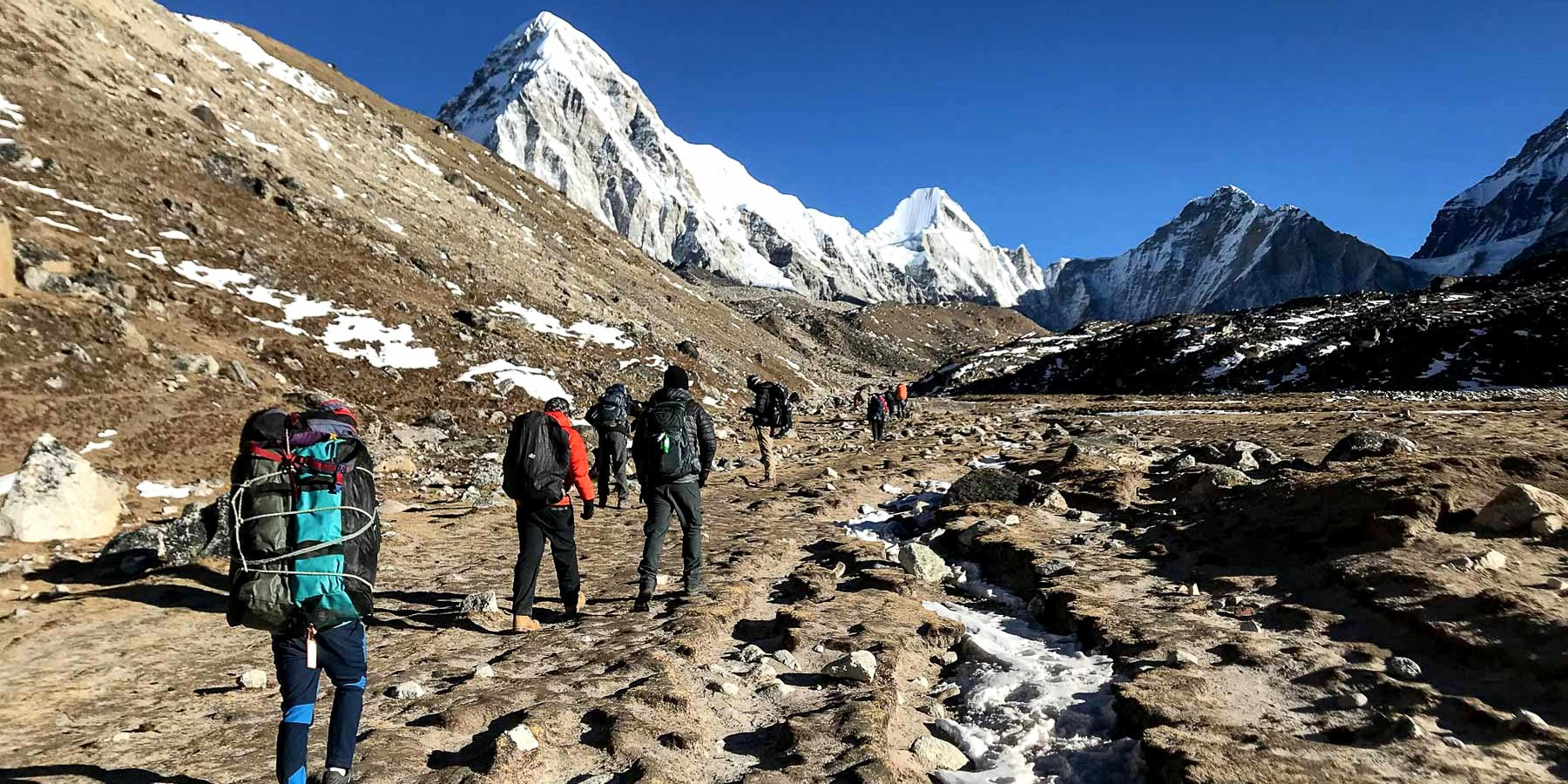
Overview: The trek to Everest Base Camp typically spans about 12 to 14 days, starting and ending in Lukla, a small town that serves as the gateway to the Everest region. This trek takes you through the heart of the Khumbu region and offers a mix of high-altitude trekking and cultural exploration as you pass through Sherpa villages, monasteries, and stunning landscapes.
Key Features
-
Altitude: The trek reaches its highest point at Kala Patthar (5,545 meters), a small peak that offers the best view of Mount Everest.
-
Route: The standard route includes important stops like Namche Bazaar, Tengboche Monastery, Dingboche, and Gorak Shep before reaching the Base Camp.
-
Difficulty: It is considered moderately difficult due to its high altitude and the physical stamina required. Acclimatization days are included in the itinerary to help trekkers adjust to the thin air.
-
Scenery: Spectacular views of towering peaks, including Everest, Lhotse, Nuptse, and Ama Dablam, among others. The region is also known for its vibrant rhododendron forests, diverse wildlife, and the massive Khumbu Glacier.
Cultural Experience: Throughout the trek, you’ll experience the warm hospitality of the Sherpa people, whose culture and Buddhist religion are closely tied to the mountains they live in. Visiting local monasteries and museums offers insights into the spiritual and everyday lives of the Sherpa community.
Preparations
-
Physical Preparation: Adequate physical fitness is required. It’s advisable to engage in cardiovascular and strength training several months before the trek.
-
Gear: Essential gear includes sturdy hiking boots, thermal and waterproof clothing, a sleeping bag suitable for cold temperatures, and a good quality backpack.
-
Permits: All trekkers need to obtain a TIMS (Trekkers' Information Management Systems) card and a Sagarmatha National Park entry permit.
The Everest Base Camp Trek is more than just a trek; it's a pilgrimage to the abode of the gods, a challenge to oneself, and a bucket-list adventure that leaves you with stories and memories that last a lifetime.
Annapurna Circuit
The Annapurna Circuit is renowned as one of the most spectacular trekking routes in the world, offering an incredibly diverse array of environments, from lush subtropical forests and fertile farming valleys to arid high mountain landscapes, all set against the backdrop of the majestic Himalayas. This trek encircles the Annapurna massif, providing trekkers with unparalleled access to spectacular natural beauty and cultural diversity.
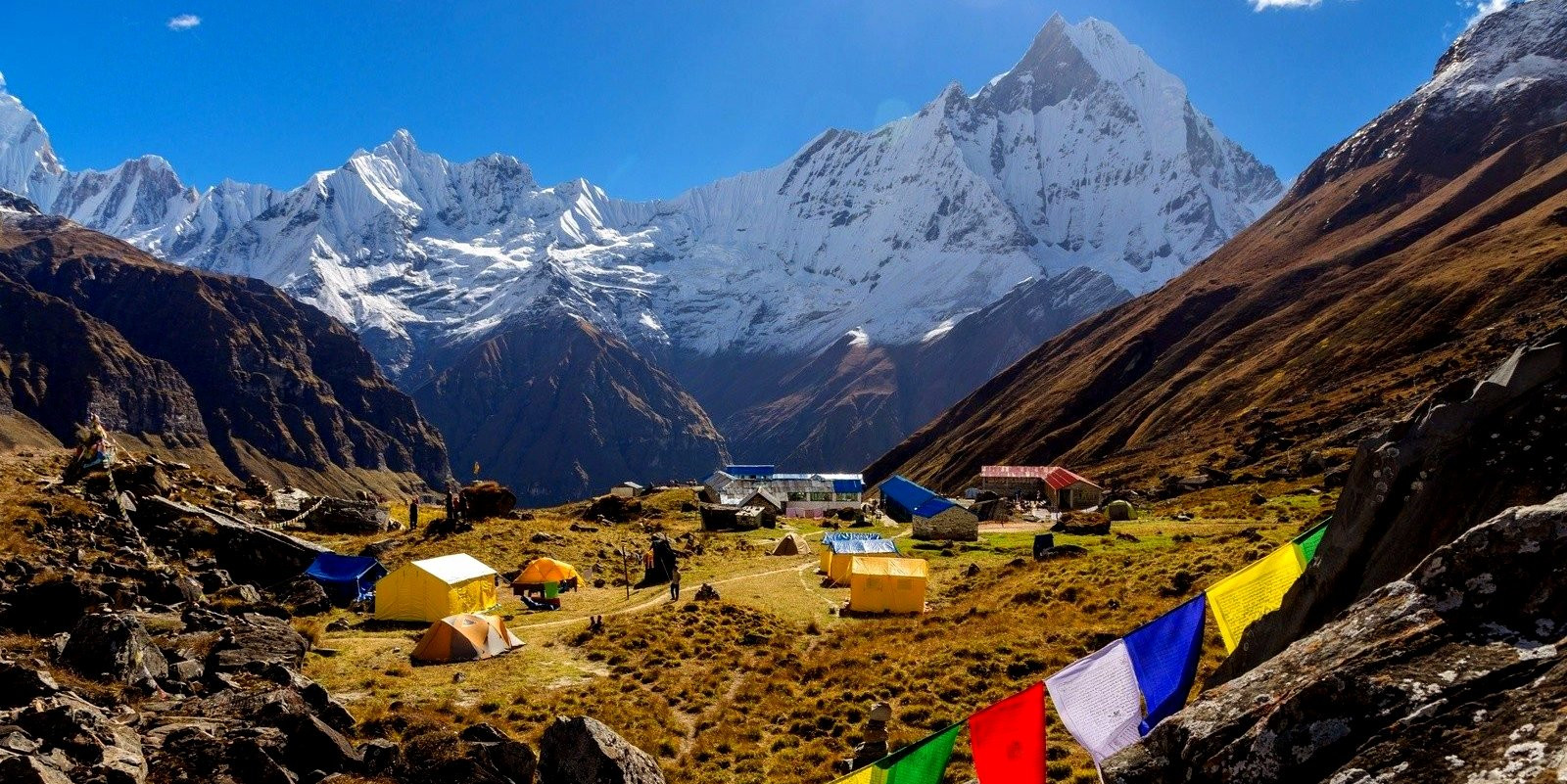
Overview: Typically taking about 12 to 21 days to complete, the Annapurna Circuit trek stretches approximately 160-230 kilometers, depending on the exact starting and finishing points and any side trips. The trek begins in Besisahar or Bhulbhule in the Marshyangdi river valley and concludes in the Kali Gandaki gorge, the world's deepest gorge.
Key Features
-
Altitude: The trek reaches its highest point at Thorong La Pass, at an elevation of 5,416 meters (17,769 feet).
-
Route: Key stops along the route include Manang, a beautiful, culturally rich village; the Thorong La Pass; and Muktinath, an important pilgrimage site for both Hindus and Buddhists. After crossing the pass, the descent follows the Kali Gandaki valley to Tatopani and then to Pokhara.
-
Difficulty: The trek is considered moderate to challenging, particularly because of the day crossing Thorong La Pass, which requires a strenuous ascent followed by a long descent.
-
Scenery: The circuit offers breathtaking views of several high peaks, including Annapurna I, Annapurna II, Dhaulagiri, Manaslu, and Machhapuchhre (Fishtail). The landscape varies dramatically from lush rhododendron forests to rocky cliffs and desert landscapes.
Cultural Experience: The trek goes through various villages inhabited by different ethnic groups, including Tamangs, Gurungs, and Thakalis, offering trekkers an opportunity to witness the daily lives and cultural richness of these communities. The trail is dotted with Tibetan-style monasteries, prayer wheels, and stupas, reflecting the strong influence of Tibetan Buddhism.
Preparations
-
Physical Preparation: Adequate preparation is key to enjoying and completing the trek comfortably. Regular hiking, cardiovascular workouts, and strength training are recommended before undertaking the circuit.
-
Gear: Essential gear includes high-quality hiking boots, layered clothing, a down jacket, a sleeping bag rated for cold temperatures, and a waterproof jacket.
-
Permits: Trekkers need an Annapurna Conservation Area Permit (ACAP) and a TIMS card to embark on the circuit.
The Annapurna Circuit remains one of the world's classic treks for a good reason. Its combination of stunning natural beauty, physical challenge, and cultural immersion makes it a profoundly rewarding experience for those who undertake it.
Kathmandu Valley Sightseeing
The Kathmandu Valley offers a treasure trove of cultural and historical attractions, making it an essential destination for anyone visiting Nepal. This valley, surrounded by hills and home to three ancient cities- Kathmandu, Patan, and Bhaktapur- is rich in UNESCO World Heritage Sites, temples, shrines, and centuries-old palaces that reflect the area's storied past and vibrant present.
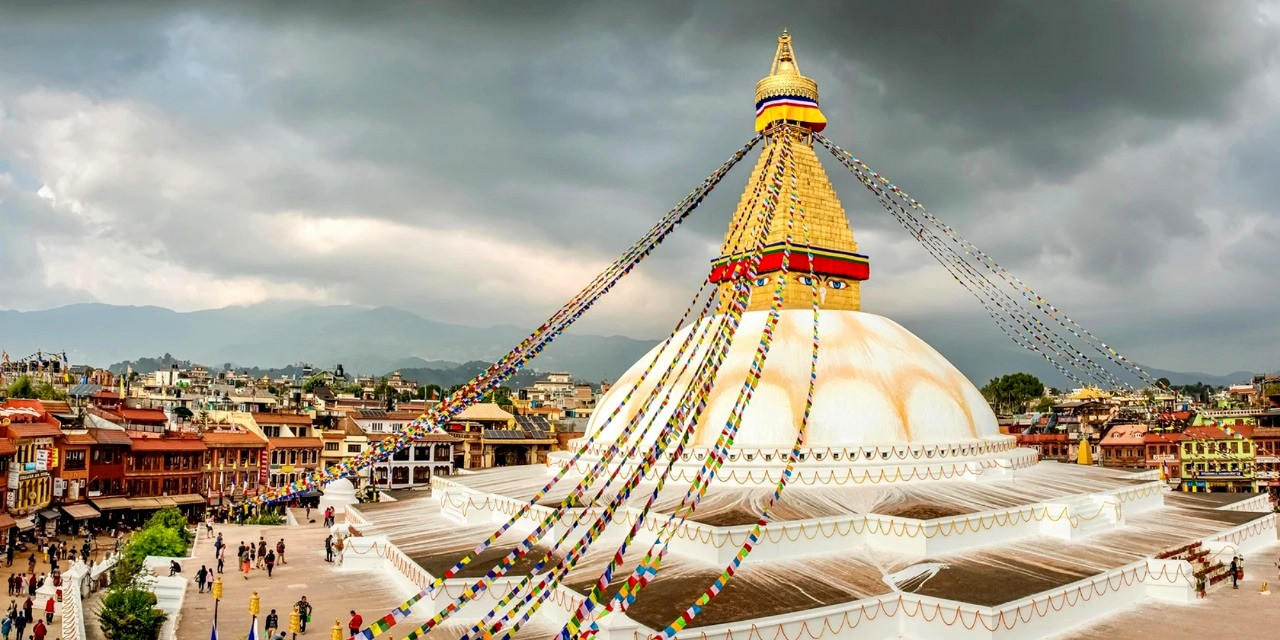
Overview: A typical Kathmandu Valley sightseeing tour covers a wide range of architectural marvels and cultural sites, usually completed in a day or two, depending on the depth of exploration. Each city within the valley has its unique flavor and hosts numerous festivals, traditional events, and ceremonies throughout the year.
Key Features
-
Kathmandu Durbar Square: Located in the heart of old Kathmandu, this square is famous for its exquisite architecture and vibrant atmosphere. The Hanuman Dhoka Palace and the Kumari Ghar, home to the living goddess Kumari, are major highlights.
-
Swayambhunath Stupa (Monkey Temple): This ancient religious complex perched atop a hill in Kathmandu is one of the most sacred Buddhist pilgrimage sites in Nepal.
-
Patan Durbar Square: Known for its artisan community and exquisite craftsmanship, Patan is less crowded and offers a more laid-back experience compared to Kathmandu. The square features the stunning Patan Museum, various temples, and intricate carvings.
-
Bhaktapur Durbar Square: This well-preserved square offers a window into the valley's glorious past, featuring majestic architectural achievements like the Nyatapola Temple and the Palace of Fifty-five Windows.
-
Pashupatinath Temple: One of the most sacred Hindu temples of Shiva in the world, located on the banks of the Bagmati River. While non-Hindus are not allowed inside the temple premises, the surroundings offer fascinating sights of elaborate Hindu rituals.
Cultural Experience: Visiting these sites not only provides insight into the architectural and cultural heritage of the Newar people but also offers a chance to witness daily religious and social practices up close. The local markets, street food, and spontaneous cultural performances in the squares provide a lively atmosphere that complements the historical exploration.
Preparations
-
Gear: Comfortable walking shoes are a must, along with a hat and sunscreen for protection against the sun. Carrying a camera is highly recommended to capture the intricate details of the sites.
-
Cultural Sensitivity: When visiting religious sites, dress modestly and be respectful of local customs. It’s important to ask for permission before taking photographs of religious ceremonies or people.
Exploring the Kathmandu Valley with Relax Getaways allows you to delve deep into the heart of Nepal’s cultural heritage, making every moment of your sightseeing tour educational, enjoyable, and memorable. Whether you’re an avid historian, an art lover, or simply curious about different cultures, Kathmandu Valley has something intriguing to offer.
Chitwan National Park Safari
Chitwan National Park is one of Nepal's premier wildlife-viewing destinations, offering a unique safari experience in the heart of the subtropical Terai lowlands. The park, Nepal's first national park, established in 1973, has been declared a UNESCO World Heritage Site due to its rich biodiversity and thriving ecosystems. Here’s an in-depth look at what makes a safari in Chitwan National Park a must-do activity for nature lovers and wildlife enthusiasts.
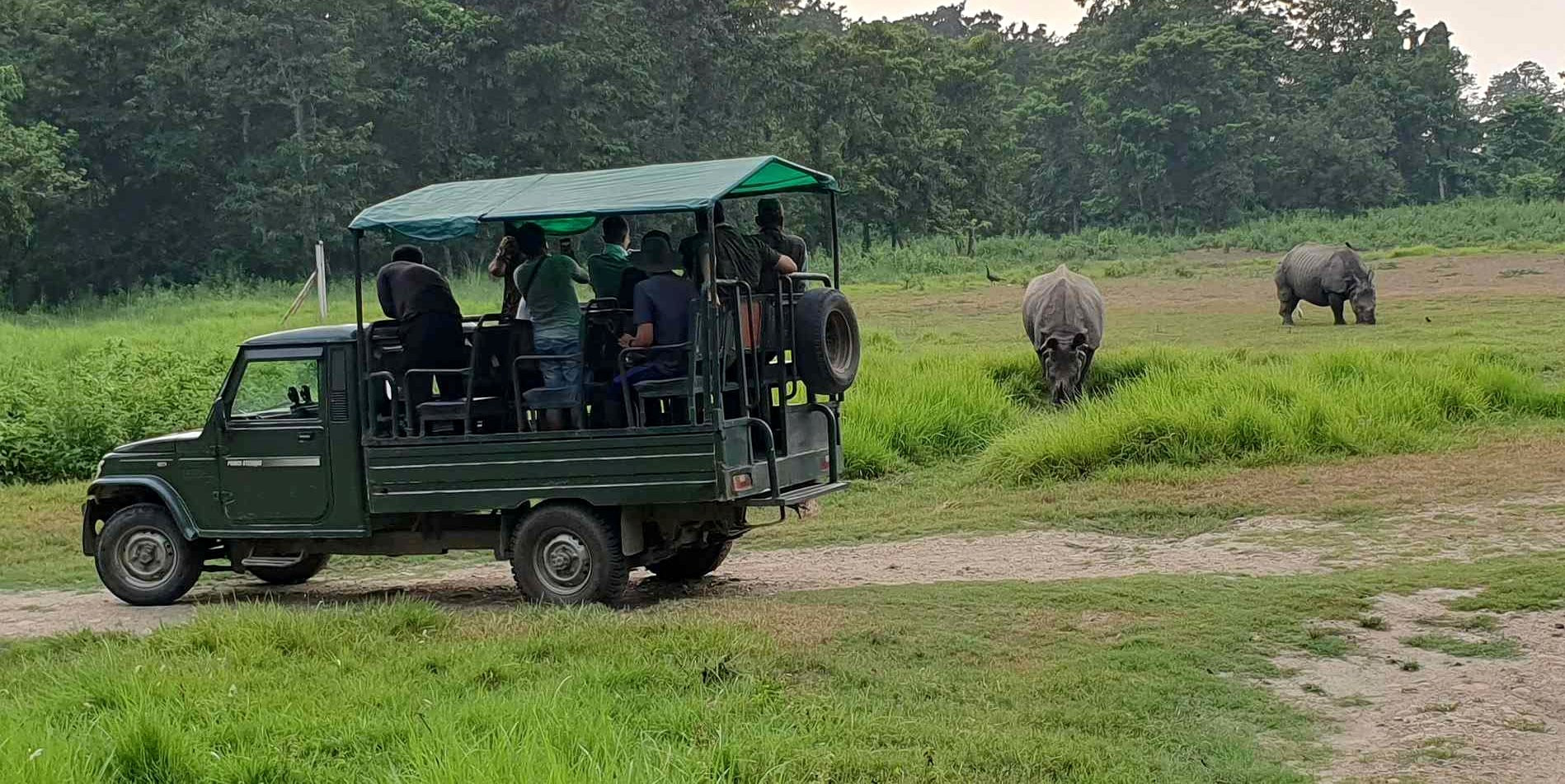
Overview: Chitwan National Park covers an area of over 932 square kilometers and is home to diverse wildlife, including several endangered species like the Royal Bengal tiger, one-horned rhinoceros, and the Gharial crocodile. A typical safari tour in Chitwan can last anywhere from a single day to several days, depending on the depth of exploration you choose.
Key Features
-
Wildlife: The park is renowned for its population of one-horned rhinoceros and Royal Bengal tigers. Other wildlife includes Asian elephants, leopards, sloth bears, several deer species, and over 500 species of birds.
-
Safari Options: Visitors can enjoy jeep safaris, guided jungle walks, canoe trips on the Rapti River, and even elephant-back safaris, although the latter is becoming less common due to ethical considerations.
-
Cultural Experience: The park is surrounded by indigenous Tharu villages, where visitors can experience local life, traditional dances, and cuisine, adding a cultural dimension to the wildlife experience.
Preparations
-
Clothing: Wear comfortable, light clothing that blends into the surroundings (greens and browns). It’s also advisable to have long sleeves and pants to protect against insects.
-
Gear: Binoculars are a must for bird-watching, and a good camera with a zoom lens will help capture distant wildlife.
-
Health: Make sure to carry insect repellent and stay hydrated, especially during the warmer months.
Exploring Chitwan National Park with Relax Getaways allows you to immerse yourself in the wonders of Nepal’s wildlife while ensuring a respectful and enriching interaction with nature. This safari is an opportunity to witness some of the planet's most spectacular creatures in their natural habitat, making it a truly unforgettable experience.
Lumbini Pilgrimage Tour
Lumbini, the birthplace of Siddhartha Gautama, the Lord Buddha, is one of the most revered spiritual sites in the world and a must-visit destination for followers of Buddhism and those interested in its history and culture. Located in the Rupandehi District of Nepal, Lumbini is recognized as a UNESCO World Heritage Site and attracts thousands of pilgrims and tourists each year who come to delve into the tranquil and spiritual environment of this sacred site.
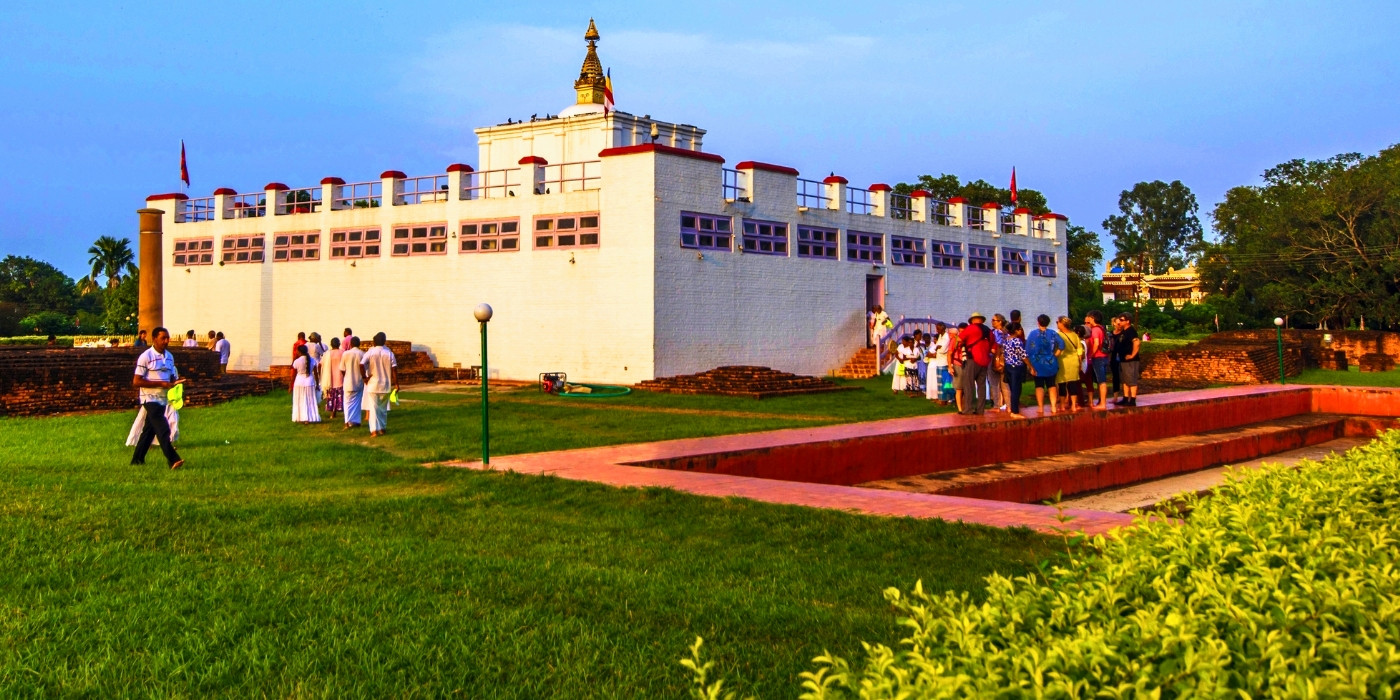
Overview: A pilgrimage tour to Lumbini not only offers a chance to visit the exact spot where Buddha was born but also allows visitors to explore various temples and monasteries built by different countries in honor of this important spiritual leader. The tour typically spans a few days to allow a thorough exploration of the site and its surroundings.
Key Features
-
Maya Devi Temple: This temple is the heart of Lumbini, built around the spot where Queen Maya Devi gave birth to Siddhartha Gautama. It houses ancient artifacts, including the marker stone and the nativity sculpture, which depict the birth of Buddha.
-
Monastic Zone: The area is divided into eastern and western zones, where only monasteries can be built. The eastern zone is dedicated to Theravadin countries, while the western zone hosts Mahayana and Vajrayana monasteries.
-
Peace Pagoda: Built by the Japanese, this stark white pagoda is one of the many international monuments in Lumbini, symbolizing peace and harmony.
-
Lumbini Museum: It houses an extensive collection of religious manuscripts and artifacts related to Buddhism from around the world.
-
Sacred Garden: This sprawling area around the Maya Devi Temple includes the ancient Ashoka Pillar, which was erected by Emperor Ashoka in 249 BC to mark his visit to the birthplace of Buddha.
Cultural Experience: Visiting Lumbini is as much a cultural journey as a spiritual one. The site offers insights into the life of Buddha and the development of Buddhism, through art, architecture, and the pilgrims that visit from around the globe. Engaging with monks, participating in prayers, and attending meditation sessions are profound experiences available to visitors.
Preparations
-
Respectful Attire: Dress modestly in respectful attire that covers shoulders and knees, especially when entering temples and monasteries.
-
Stay Hydrated: The climate can be warm, so carrying water and staying hydrated is important.
-
Cultural Sensitivity: Be mindful of local customs and religious practices, especially during meditation sessions or ritual observances.
A Lumbini Pilgrimage Tour with Relax Getaways to experience a profound sense of peace and spirituality. This tour is not just a visit to a historical place but a journey into the heart of Buddhist teachings and the remarkable life of Buddha.
Langtang Valley Trek
The Langtang Valley Trek is a mesmerizing journey into one of Nepal's most beautiful and accessible trekking regions, located just north of Kathmandu. This trek offers a spectacular introduction to the Himalayas, featuring stunning landscapes, traditional villages, and the unique culture of the Tamang people, whose lifestyle reflects their Tibetan origins. The trek not only showcases the natural beauty of the Langtang region but also provides insights into the resilience and hospitality of its communities.
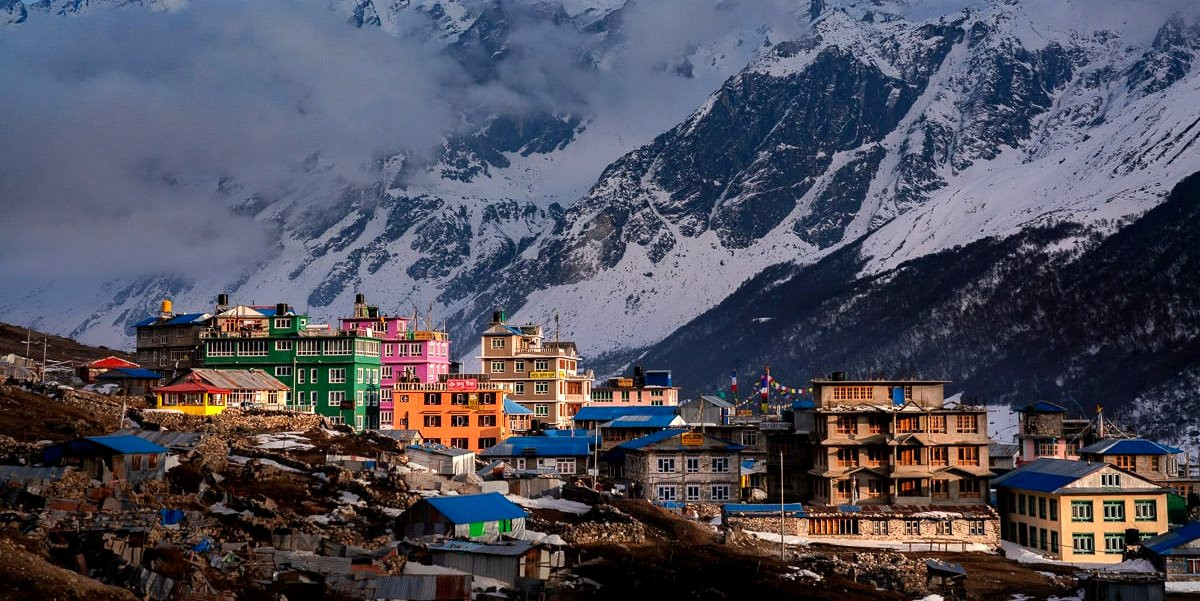
Overview: Typically, the Langtang Valley Trek spans about 7 to 12 days, depending on the starting point and whether extensions like Kyanjin Gompa or the sacred lakes of Gosainkunda are included. The trek is relatively less crowded compared to Everest and Annapurna, offering a more serene experience.
Key Features
-
Route: The trek begins in Syabrubesi, a small town a few hours' drive from Kathmandu. From there, trekkers ascend to Lama Hotel, Langtang village, and finally to Kyanjin Gompa, where they can explore ancient monasteries and enjoy views of Langtang Lirung and surrounding peaks.
-
Kyanjin Gompa: This small village is a highlight of the trek, home to an important Buddhist monastery and the gateway to high-altitude lakes and glaciers.
-
Tamang Heritage Trail: Part of the trek features the Tamang Heritage Trail, which offers a deep dive into the rich culture, architecture, and customs of the Tamang people.
-
Scenery: The region boasts diverse flora and fauna, from pine forests and swift mountain streams to wide open pastures and meadows that offer a peaceful hiking experience.
Cultural Experience: The Langtang Valley Trek is particularly notable for its cultural richness. Trekkers can visit local monasteries, interact with the Tamang and Sherpa communities, and learn about their traditions, music, and crafts. The devastating earthquake in 2015 impacted this area significantly, and trekking here supports the local economy and recovery efforts.
Preparations
-
Fitness Level: While not as demanding as some other Himalayan treks, good physical fitness will enhance your experience and comfort on the trail.
-
Gear: Essential gear includes sturdy trekking boots, layers for changing conditions, a warm jacket, and a waterproof shell. Also, bring a sleeping bag and a comfortable backpack.
-
Permits: Trekkers need to obtain a TIMS card (Trekkers' Information Management System) and a Langtang National Park permit.
The Langtang Valley Trek with Relax Getaways promises not just a trek but a journey filled with awe-inspiring views, heartwarming interactions, and a deeper appreciation of Nepal’s natural and cultural landscapes.
Pokhara Sightseeing
Pokhara, often referred to as the gateway to the Annapurna Circuit, is one of Nepal's most picturesque and popular tourist destinations. Nestled at the base of the towering Annapurna range, Pokhara offers a serene yet vibrant atmosphere with its beautiful lakes, lush surroundings, and a backdrop of snow-capped mountains. It's an ideal spot not only for adventurers but also for those seeking relaxation or a taste of local culture.
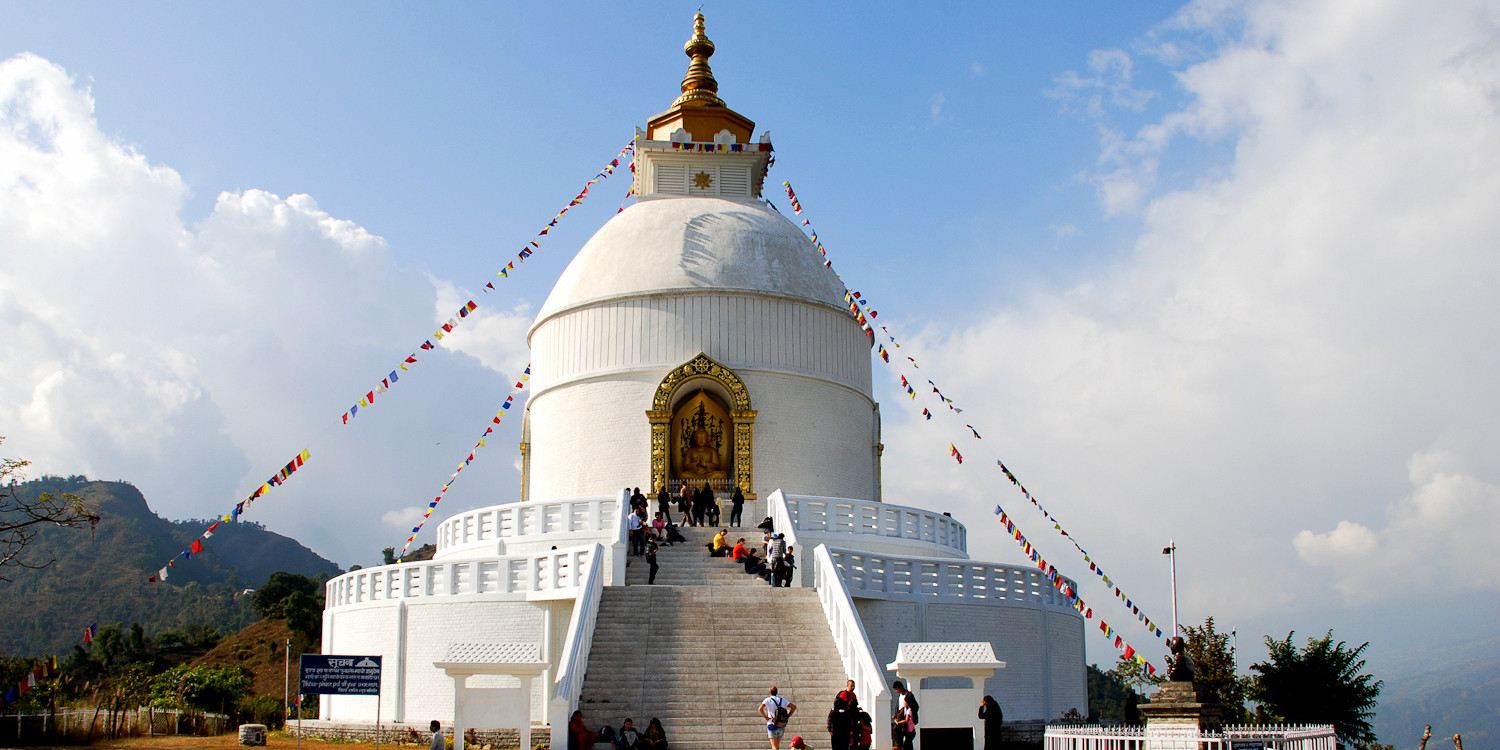
Overview: A typical sightseeing tour in Pokhara includes a mix of natural beauty and cultural attractions, all set within a relatively compact area that makes it easy to explore. Whether you're here for a day or a week, Pokhara has something to captivate everyone.
Key Features
-
Phewa Lake: The second largest lake in Nepal, Phewa Lake is the center of attraction in Pokhara. You can enjoy boating or kayaking, and visit the Tal Barahi Temple located on an island in the middle of the lake.
-
World Peace Pagoda: Situated on a hill overlooking the lake, this pagoda offers a panoramic view of the Pokhara Valley and the Annapurna mountains, making it a perfect spot for photographers and peace seekers.
-
Davis Falls: This spectacular waterfall disappears into an underground tunnel after reaching the bottom, making it a unique and intriguing natural site.
-
Sarangkot: A short drive from Pokhara, Sarangkot is best known for its sunrise views where the sun lights up the Annapurna and Dhaulagiri ranges. It’s also a popular spot for paragliding.
-
Gupteshwor Mahadev Cave: Located near Davis Falls, this cave houses a revered Shiva temple and offers an interesting spelunking experience with its limestone formations.
Cultural Experience: Pokhara is rich in cultural diversity, with influences from various ethnic groups, including the Gurungs, Magars, and Thakalis. The city hosts several museums, including the Pokhara Regional Museum and the Annapurna Natural History Museum, which showcase local history, flora, and fauna. Additionally, the vibrant Lakeside area is lined with cafes, shops, and galleries that reflect the contemporary art and lifestyle of Nepal.
Preparations
-
Clothing: Pack layers, as the temperature can vary, especially if you plan to visit early in the morning or late in the evening for sunrise or sunset views.
-
Gear: Don't forget your camera, as Pokhara offers countless photogenic scenes. A good pair of walking shoes will also serve you well on hilly terrains and treks.
Exploring Pokhara with Relax Getaways allows you to experience the natural beauty, adventurous activities, and cultural richness of one of Nepal’s most beloved cities comfortably and memorably. Whether you’re soaking in the views, exploring local temples, or simply enjoying a quiet moment by the lake, Pokhara is sure to leave you with lasting memories.
Tips for Popular Tours in Nepal
Tours in Nepal can be a deeply enriching and unforgettable experience, given the country's stunning natural landscapes and vibrant cultural heritage. Here are some essential tips to help you make the most of your journey across popular tours in Nepal, whether you're trekking through the Himalayas or exploring historic cities.
Choose the Right Season
-
Best Time for Trekking: The best times for trekking in Nepal are during the pre-monsoon (spring: March to May) and post-monsoon (autumn: September to November) seasons. These months feature stable weather and clear skies, ideal for mountain views.
-
Cultural Tours: For cultural tours, especially in places like Kathmandu and Pokhara, the climate is generally favorable year-round, but visiting during local festivals can be particularly rewarding.
Acclimatize Properly
- When trekking in high altitudes, such as on the Everest Base Camp or Annapurna Circuit treks, take the necessary acclimatization days to avoid altitude sickness. Listen to your body and don't rush your ascent.
Get the Necessary Permits
- Many trekking routes in Nepal require permits such as the TIMS (Trekkers' Information Management System) card and region-specific permits like the Annapurna Conservation Area Permit or the Sagarmatha National Park Permit. Make sure you have all the required documents before setting out.
Pack Appropriately
-
For treks, pack layers of clothing that can handle a wide range of temperatures. Include a good pair of trekking boots, thermal layers, a waterproof jacket, and a warm sleeping bag.
-
For cultural tours, comfortable walking shoes and modest clothing that covers shoulders and knees are appropriate, especially when visiting religious sites.
Hire Experienced Guides
- Whether for trekking or cultural insights, hiring knowledgeable local guides enhances safety and enriches your experience. Guides can provide valuable insights into local culture, history, and geography that you might otherwise miss.
Stay Hydrated and Mind Your Diet
- Drink plenty of water, especially while trekking, to stay hydrated. Be cautious with street food; opt for well-cooked meals and avoid raw vegetables and salads unless you're sure they are safe to eat.
Respect Local Customs and Traditions
- Nepal is culturally rich with diverse customs and traditions. Show respect by dressing modestly, removing shoes before entering temples or homes, and greeting locals with "Namaste."
Plan for Communication
- While major cities and towns have good mobile coverage, remote trekking areas may not. Consider renting a satellite phone if you anticipate needing communication in off-grid areas.
Consider Travel Insurance
- It’s wise to have travel insurance that covers high-altitude trekking and medical evacuation, given the remote nature of many popular trekking destinations in Nepal.
Leave No Trace
- Practice eco-friendly travel habits by disposing of waste properly, using water sparingly, and minimizing your environmental impact. Support local economies by purchasing local goods and services.
By following these tips, your tour of Nepal will not only be enjoyable but also safe and respectful towards the natural environment and local cultures. Whether you're trekking up to snow-capped peaks or wandering through ancient temples, Nepal is sure to offer an extraordinary experience.
Ideal Time for Popular Tours in Nepal
Nepal's diverse climate results from its unique geography, which ranges from the lowland Terai region to the high Himalayas. The country experiences four distinct seasons, each offering different opportunities and experiences for travelers. Here’s a breakdown of each season:
Spring (March to May)
-
Characteristics: Spring is a vibrant season in Nepal, characterized by mild to warm temperatures and gradually dissipating snow at higher elevations. It's a period of renewal, with flowers blooming, particularly rhododendrons, Nepal’s national flower.
-
Activities: Ideal for trekking, mountaineering, and all forms of outdoor activities. This is one of the best times for high-altitude treks as the trails are generally dry, and the weather is stable.
Summer/Monsoon (June to September)
-
Characteristics: Summer coincides with the monsoon season, when the country experiences most of its annual rainfall. It can be hot and humid, especially in the Terai region, with daily rain showers that can last for hours.
-
Activities: Trekking can be challenging in popular regions due to mud and leeches, but the rain shadow areas like Upper Mustang and Dolpo offer good trekking opportunities. It's also a great time for agricultural tours as the fields are lush and green.
Autumn (October to November)
-
Characteristics: Autumn is perhaps the most popular trekking season in Nepal. The monsoon rains leave the air clean and fresh, the skies clear, and the mountain views spectacular. Temperatures are comfortably cool and make for pleasant trekking and sightseeing conditions.
-
Activities: Perfect for trekking, climbing, and enjoying festivals. Major festivals like Dashain and Tihar fall during this season, offering travelers a chance to experience Nepal's vibrant cultural and religious celebrations.
Winter (December to February)
-
Characteristics: Winter in Nepal is generally cold, especially at night, with temperatures dropping below freezing at higher altitudes. Snowfall is common in the mountains, but the lower regions remain dry and chilly.
-
Activities: Ideal for lower-altitude treks and wildlife safaris in the Terai, as cooler temperatures mean animals are more active during the day. It's also a good time for cultural tours in cities as the days are usually sunny and bright.
Each season in Nepal has its charm and set of activities that can be enjoyed. Whether you’re looking to engage in adventurous activities or explore cultural landmarks, knowing what each season offers can help you plan your trip accordingly.
From cultural explorations in Kathmandu to spiritual trips in Lumbini, Nepal presents an extensive range of tours appropriate for all kinds of tourists, from high-altitude treks including the Everest Base Camp and Annapurna Circuit. Spring and fall, which allow for perfect conditions for cultural events as well as trekking, are ideal times of visit. But each season in Nepal presents special chances and events, therefore rendering it a year-round vacation spot. Whether seeking adventure, cultural submersion, or natural beauty, Nepal is sure to be an enriching and unforgettable journey.
FAQs for Popular Tours in Nepal
Q: What is the best time to visit Nepal for trekking?
A: The optimal times for trekking are during the spring (March to May) and autumn (September to November) when the weather is stable and skies are clear, offering excellent mountain views.
Q: Do I need any permits for trekking in Nepal?
A: Yes, most trekking areas require permits, such as the TIMS (Trekkers' Information Management System) card and regional permits like the Annapurna Conservation Area Permit or the Sagarmatha National Park Permit for the Everest region.
Q: How physically fit do I need to be to undertake a trek in Nepal?
A: Treks can range from moderate to strenuous. It is recommended to engage in physical training such as hiking, jogging, or cycling months before your trek to build appropriate stamina and endurance.
Q: What are the essential items to pack for a trek in Nepal?
A: Essential items include sturdy trekking boots, layered clothing, a warm jacket, a waterproof jacket, a sleeping bag for cold climates, a backpack, sun hat, sunscreen, and a first-aid kit.
Q: Can I undertake tours in Nepal without a guide?
A: While some treks can be done independently, hiring a guide is recommended for safety and a more enriching experience. Guides offer valuable insights into local culture, flora, fauna, and geography.
Q: What cultural norms should I be aware of when visiting Nepal?
A: Dress modestly, especially at religious sites, and ask for permission before taking photos of people or religious ceremonies. It's customary to remove your shoes before entering homes or places of worship.
Q: What are the accommodation options like during treks?
A: Accommodation usually involves teahouses or lodges that provide basic rooms and communal eating areas. Comfort levels vary, with more amenities available at lower elevations.
Q: Are there any health concerns I should be aware of?
A: Be cautious of altitude sickness in high areas; ascend gradually and stay hydrated. Also, avoid untreated water to prevent water-borne illnesses.
Q: What wildlife might I see in Nepal?
A: In lower regions like Chitwan National Park, you might see Bengal tigers, one-horned rhinoceroses, and various birds. In higher areas, look for snow leopards and Himalayan tahr.
Q: How can I ensure that my visit is environmentally friendly?
A: Practice sustainable travel habits by minimizing waste, conserving water, and avoiding plastic. Choose eco-friendly tours and accommodations that support local communities and conservation efforts.
For the Nepal tour, please click here.
If you are looking for different kinds of Nepal Tours or Trekking Packages, feel free to contact us.
